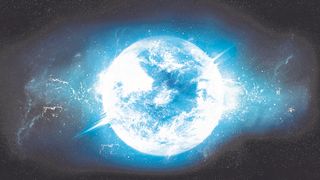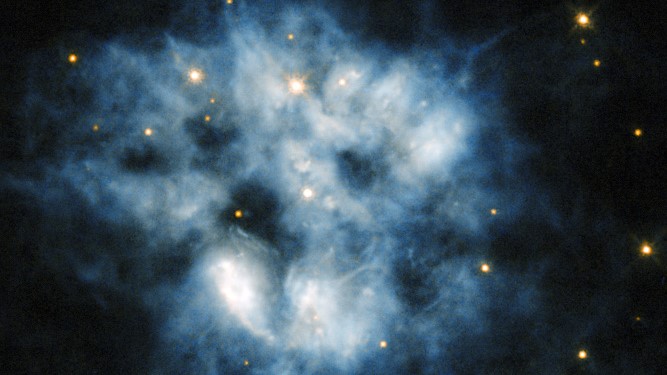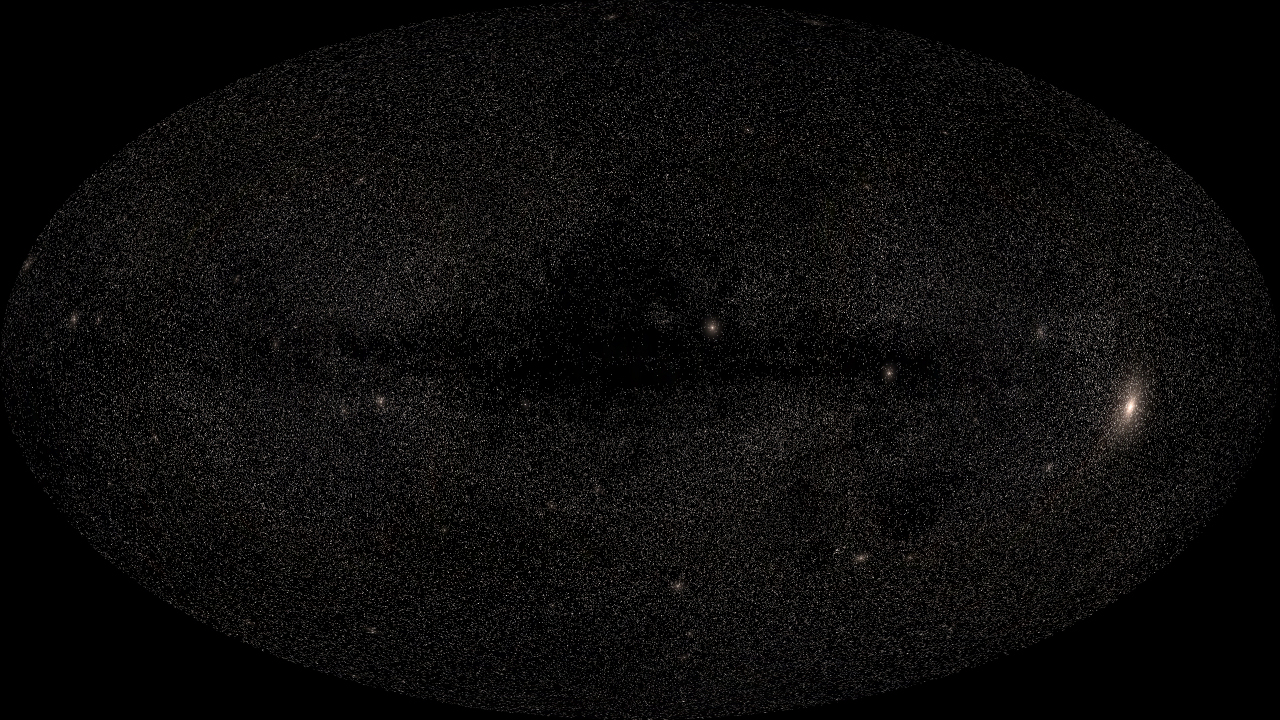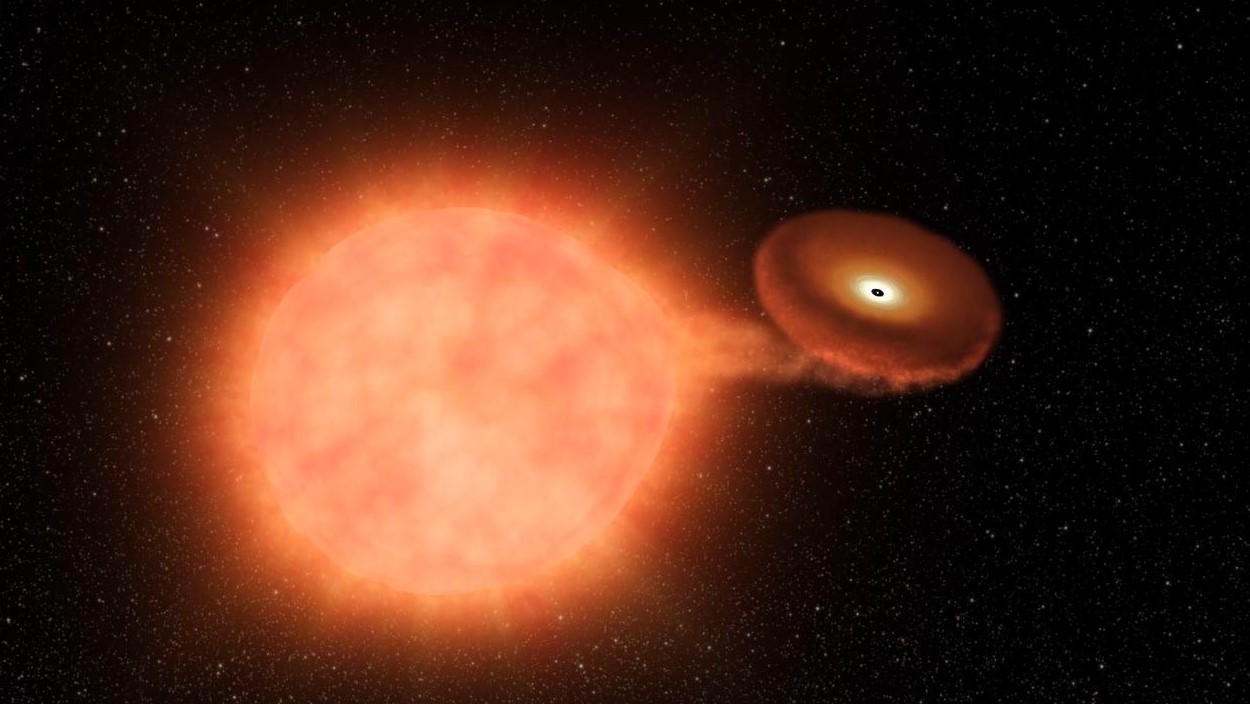Can a White Dwarf Become a Star Again
White dwarfs: Facts about the dense stellar remnants

White dwarfs are what is left when stars like our sun take exhausted all of their fuel. They are dense, dim, stellar corpses — the last observable phase of evolution for low- and medium-mass stars.
Whilst nearly massive stars will eventually go supernova, a low or medium mass star with a mass less than well-nigh 8 times the mass of the sunday will somewhen get a white dwarf, according to NASA. Approximately 97% of the stars in the Milky Way volition eventually become white dwarfs, co-ordinate to researchers.
Compared to our sun, a white dwarf has a similar carbon and oxygen mass though information technology is much smaller in size — similar to Earth, co-ordinate to New Mexico State University (NMSU).
White dwarf temperatures tin exceed 100,000 Kelvin co-ordinate to NASA (that's about 179,500 degrees Fahrenheit). Despite these sweltering temperatures, white dwarfs have a low luminosity as they're then pocket-size in size according to NMSU.
Related: Scarlet dwarfs: The nearly mutual and longest-lived stars
White dwarf formation
Master-sequence stars, including the sun, form from clouds of dust and gas drawn together by gravity. How the stars evolve through their lifetime depends on their mass. The about massive stars, with 8 times the mass of the sun or more, will never become white dwarfs. Instead, at the end of their lives, white dwarfs will explode in a fierce supernova, leaving behind a neutron star or blackness hole.
Did you know?
According to NASA, a teaspoon of white dwarf thing would counterbalance five.5 tons on Earth — well-nigh the same as an elephant!
Smaller stars, even so, will take a slightly more sedate path. Low- to medium-mass stars, such as the lord's day, will eventually swell up into red giants. After that, the stars shed their outer layers into a ring known as a planetary nebula (early observers thought the nebulas resembled planets such as Neptune and Uranus ). The core that is left behind will exist a white dwarf, a husk of a star in which no hydrogen fusion occurs.

Smaller stars, such as red dwarfs, don't make it to the cherry-red giant state. They simply fire through all of their hydrogen, ending the process as a dim white dwarf. However, cherry-red dwarfs take trillions of years to swallow their fuel, far longer than the thirteen.8-billion-year-old age of the universe, so no scarlet dwarfs have yet get white dwarfs.
White dwarf characteristics
When a star runs out of fuel, it no longer experiences an outward push from the process of fusion and it collapses inward on itself. White dwarfs incorporate approximately the mass of the sun simply take roughly the radius of Earth, according to Cosmos, the astronomy encyclopedia from Swinburne Academy in Commonwealth of australia. This makes them among the densest objects in space, beaten out just by neutron stars and blackness holes. According to NASA, the gravity on the surface of a white dwarf is 350,000 times that of gravity on Earth. That means a 150-pound (68-kilogram) person on Earth would weigh 50 meg pounds (22.7 million kg) on the surface of a white dwarf.

White dwarfs accomplish this incredible density because they are collapsed so tightly that their electrons are smashed together, forming what is called "degenerate matter." The onetime stars volition go along collapsing until the electrons themselves provide enough of an outward-pressing strength to halt the crunch. The more mass, the greater the pull inwards, then a more than massive white dwarf has a smaller radius than its less massive counterpart. Those conditions mean that, after shedding much of its mass during the cherry-red giant stage, no white dwarf tin exceed ane.4 times the mass of the lord's day.
When a star swells up to get a red giant, information technology engulfs its closest planets. But some tin can however survive. NASA'southward Spitzer spacecraft revealed that at to the lowest degree 1 to 3 percent of white dwarf stars have contaminated atmospheres that suggest rocky fabric has fallen into them.
"In the quest for Globe-similar planets, we take now identified numerous systems which are excellent candidates to harbor them," Jay Farihi, a white dwarf researcher at the University of Leicester in England, told Space.com. "Where they persist every bit white dwarfs, any terrestrial planets volition not be habitable, just may have been sites where life developed during a previous epoch."
In one exciting case, researchers accept observed the rocky material as it falls into the white dwarf.
"It's exciting and unexpected that we can encounter this kind of dramatic change on human being timescales," Boris Gänsicke, an astronomer at the University of Warwick in England, told Space.com.
The fate of a white dwarf

Many white dwarfs fade away into relative obscurity, eventually radiating away all of their energy and becoming then-called black dwarfs, but those that share a system with companion stars may suffer a unlike fate.
If the white dwarf is part of a binary organization, it may exist able to pull material from its companion onto its surface. Increasing the white dwarf's mass can take some interesting results.
I possibility is that the added mass could cause it to collapse into a much denser neutron star.
A far more explosive result is the Type 1a supernova. As the white dwarf pulls material from a companion star, the temperature increases, somewhen triggering a runaway reaction that detonates in a vehement supernova that destroys the white dwarf. This procedure is known as a "unmarried-degenerate model" of a Blazon 1a supernova.
Related: Know Your Novas: Star Explosions Explained (Infographic)
In 2012, researchers were able to closely discover the complex shells of gas surrounding ane Blazon 1a supernova in fine item.
"We really saw, for the first time, detailed evidence of the progenitor for a Blazon 1a supernova," Benjamin Dilday, the study'southward lead author and an astronomer at Las Cumbres Observatory Global Telescope Network in California told SPACE.com.
If the companion is another white dwarf instead of an agile star, the two stellar corpses merge together to kicking off the fireworks. This process is known every bit a "double-degenerate model" of a Blazon 1a supernova.
At other times, the white dwarf may pull but enough material from its companion to briefly ignite in a nova, a far smaller explosion. Because the white dwarf remains intact, information technology can repeat the procedure several times when it reaches that critical betoken, animate life back into the dying star over and over over again.
"These are the brightest and most frequent stellar eruptions in the galaxy, and they're frequently visible to the naked eye," Przemek Mróz, an astronomer at Poland's Warsaw University, told Space.com in a previous article.
Boosted resources
You can acquire more than near white dwarfs with ESA and explore different types of stars with NASA. Discover the development of binary star systems with this free educational material from Lumen Learning. Explore the physics of the universe with white dwarfs in this informative material from The Academy of Texas at Austin.
Bibliography
- Dilday, B., et al. "PTF 11kx: A type Ia supernova with a symbiotic nova progenitor." Science 337.6097 (2012): 942-945.
- Fontaine, G., P. Brassard, and P. Bergeron. "The Potential of White Dwarf Cosmochronology1." Publications of the Astronomical Society of the Pacific 113.782 (2001): 409.
- Horowitz, C. J. "Nuclear and nighttime matter heating in massive white dwarf stars." Concrete Review D 102.8 (2020): 083031.
- Bédard, A., et al. "On the spectral evolution of hot white dwarf stars. I. A detailed model atmosphere analysis of hot white dwarfs from SDSS DR12." The Astrophysical Journal 901.2 (2020): 93.
- ESA "Shedding low-cal on white dwarfs — the hereafter of stars like our sun." 2019
Bring together our Infinite Forums to keep talking infinite on the latest missions, dark sky and more than! And if you have a news tip, correction or comment, permit u.s.a. know at: community@space.com.
Source: https://www.space.com/23756-white-dwarf-stars.html#:~:text=Because%20the%20white%20dwarf%20remains,star%20over%20and%20over%20again.
0 Response to "Can a White Dwarf Become a Star Again"
Postar um comentário